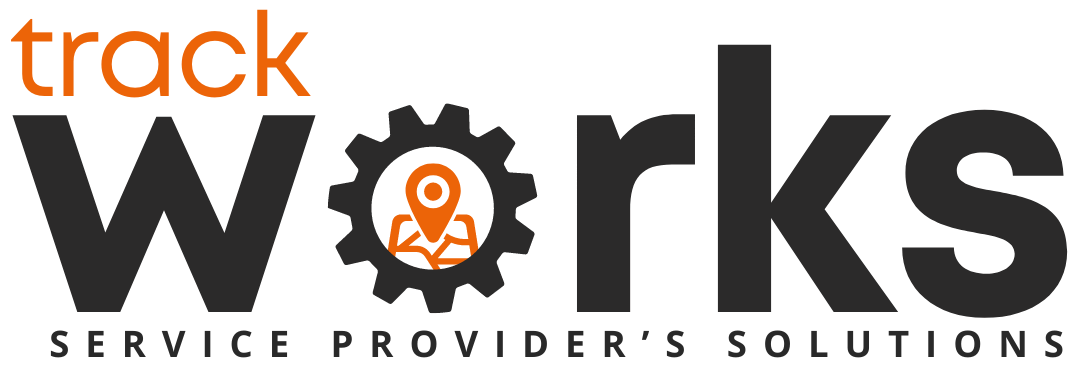The 2026 Field Service Playbook: 5 Trends Shaping the Future of Operations
As 2026 approaches, the field service industry is at a turning point. What once depended on clipboards, phone calls, and manual scheduling has evolved into a fully digital ecosystem powered by automation, analytics, and mobile connectivity.
The companies that will lead the next era of field service aren’t just adopting new tools — they’re reimagining how people, processes, and technology work together to deliver smarter, faster, and more transparent service.
This playbook explores five key trends shaping field service operations in 2026, and how platforms like Track Works are helping businesses transform these trends into real competitive advantage.
1. Intelligent Automation Becomes the Standard
Why it matters:
Automation is no longer a luxury — it’s an operational necessity. From scheduling to job tracking, automation eliminates manual tasks, reduces human error, and accelerates response times.
What’s changing:
In 2026, we’ll see field service companies fully embrace AI-driven automation that uses real-time data to assign jobs, optimize routes, and trigger follow-up actions automatically.
How to implement:
- Automate repetitive processes like dispatching and invoicing.
- Use geo-tracking to assign the nearest available technician.
- Integrate automatic notifications for customers and managers.
Track Works advantage:
Track Works automation and scheduling tools streamline workflows, reduce administrative load, and ensure every job is logged, tracked, and completed without delay — improving consistency and reducing overhead.
2. Data-Driven Decision Making Defines Leadership
Why it matters:
In field service, data is the new foundation of growth. Every completed work order, technician report, and maintenance log holds insights that can drive smarter business decisions.
What’s changing:
The move from reactive to predictive analytics will allow leaders to anticipate trends, forecast demand, and improve performance before issues arise.
How to implement:
- Centralize data from all field activities into one platform.
- Use dashboards to monitor KPIs such as completion times, response rates, and equipment reliability.
- Apply predictive analytics to identify potential bottlenecks or downtime.
Track Works advantage:
Track Works Analytics transforms operational data into actionable intelligence, giving managers the visibility they need to make strategic, proactive decisions.
3. Mobile-First Operations Dominate Workforce Management
Why it matters:
Technicians spend most of their time in the field — not behind a desk. Mobile accessibility has become essential for productivity, accuracy, and communication.
What’s changing:
In 2026, the most efficient field service operations will run entirely on mobile platforms, enabling real-time updates, digital signatures, and paperless job management.
How to implement:
- Equip technicians with mobile tools for reporting, inventory, and communication.
- Use cloud-based apps to sync updates instantly between the field and the office.
- Replace paper forms with digital checklists and automated service confirmations.
Track Works advantage:
The Track Works mobile app gives technicians instant access to schedules, job history, and reporting tools — ensuring seamless coordination between field and office teams.
4. Customer Experience Becomes the Core Differentiator
Why it matters:
Customers no longer measure satisfaction by job completion alone — they expect transparency, communication, and reliability throughout the service journey.
What’s changing:
Field service providers are now judged by how well they communicate, how predictable their scheduling is, and how fast they resolve issues.
How to implement:
- Offer customers real-time visibility into technician status and job updates.
- Provide digital service confirmations and reports.
- Use feedback data to improve response time and communication.
Track Works advantage:
Track Works’ real-time technician tracking and automated notifications keep customers informed at every step, building trust and improving retention.
5. Sustainability and Efficiency Drive Strategic Growth
Why it matters:
Operational efficiency now goes hand in hand with environmental responsibility. Reducing fuel waste, optimizing routes, and extending asset lifespan are not only good for business — they’re good for the planet.
What’s changing:
Field service leaders are focusing on sustainability metrics — measuring fuel savings, paper reduction, and energy efficiency alongside financial KPIs.
How to implement:
- Use route optimization to reduce travel miles.
- Adopt digital documentation to eliminate paper use.
- Maintain equipment proactively to reduce waste and extend asset life.
Track Works advantage:
With geo-tracking and automated scheduling, Track Works helps teams minimize travel time, reduce emissions, and improve resource utilization — supporting a more sustainable and cost-efficient operation.
Conclusion: The Future Belongs to Connected, Intelligent Operations
The field service industry in 2026 will be defined by intelligence, integration, and innovation. Companies that embrace automation, data analytics, and customer-centric operations will not only survive — they’ll thrive.
Track Works stands at the intersection of these transformations — giving field service leaders the tools to connect teams, control operations, and scale intelligently.
From automation to analytics, every feature is designed to empower smarter, more efficient decision-making — turning your daily operations into long-term business growth.
The future of field service is not just digital.
It’s intelligent, mobile, and built for performance.




No responses yet